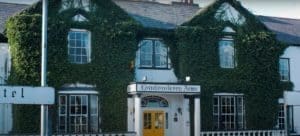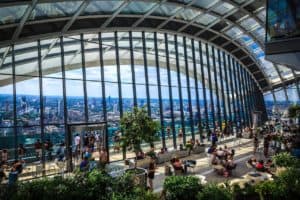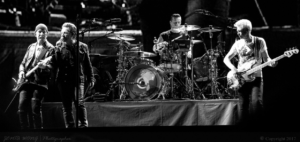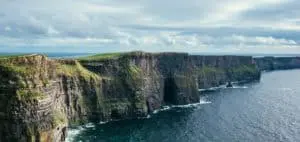Guardians of the Gael: Safeguarding Irish Cultural Heritage for Future Generations

Updated On: April 22, 2024 by Maha Yassin
Ireland’s cultural landscape is a tapestry rich with language, music, and arts, each thread a vital part of the nation’s identity. As guardians of the Gael, there’s a collective responsibility to preserve these quintessentially Irish elements. The task takes on new dimensions in the 21st century, as global influences and technological advancements present unique challenges and opportunities. Embracing the historical context of Irish identity is crucial in understanding the significance of these cultural artefacts, especially as they evolve and adapt in the modern world.
With its lyrical cadences, the Irish language holds centuries of stories, values, and expressions unique to the Emerald Isle. The language’s resilience reflects the unwavering commitment to uphold a legacy that has weathered colonialism and modern indifference. At the same time, Irish music and dance continue to pulse with life, not merely as entertainment but as a communal expression of joy, sorrow, and everything in between. Cultural institutions and organisations play a pivotal role in this preservation effort, ensuring that the arts remain a living, breathing aspect of Irish daily life.
Historical Context of Irish Identity

Before we delve into the rich tapestry of Irish identity, it’s essential to understand its roots within the Gaelic legacy and how historical events, particularly the Great Famine, influenced its evolution. The revival movements of the late 19th and early 20th centuries catalysed a national awakening, reaffirming the nation’s culture and language.
The Gaelic Legacy and its Famine-Era Challenges
Ireland’s history is deeply intertwined with the Gaelic tradition, which embodies the nation’s original language, customs, and societal structures. This legacy, flourishing before the arrival of Norman and English influences, faced significant challenges during the Great Famine of the mid-19th century. The famine had a catastrophic impact on the population and triggered a cultural crisis, as mass emigration and mortality rates threatened the transmission of Gaelic traditions and language.
- Population before the famine: Approximately 8 million
- Population after the famine: Below 4.4 million
Through these dark times, the heart of Irish identity, the essence of “The Gael,” remained resilient, with the people’s enduring spirit safeguarding their cultural footprint for future regeneration.
Revival Movements and National Awakening
The Gaelic Revival, blossoming towards the end of the 19th century, marked an era of cultural nationalism that sought to resurrect and promote Irish heritage. This period saw the establishment of entities such as Conradh na Gaeilge (The Gaelic League) and heralded a surge in Irish literature and arts, fostering a renewed sense of Irish nationalism.
- Founded: Conradh na Gaeilge in 1893
- Objective: The preservation and promotion of the Irish language and culture
The revival dovetailed with political aspirations for independence, culminating in the Easter Rising 1916. Though militarily unsuccessful, this insurrection ignited a series of events that would lead to the eventual establishment of the Irish Free State in 1922. The rise of Irish nationalism and cultural identity interwove to redefine the nation’s place in the world after centuries of British rule. This intersection of heritage and politics underscored the indomitable will of the Irish people to safeguard and celebrate their Gaelic identity into the 21st century and beyond.
The Irish Language Today

Revising the Irish language is a cultural priority, and efforts to preserve this rich linguistic heritage are seen across various regions and institutions.
Current State and Geographical Strongholds
The Irish language, known as Gaeilge, remains a living language in Ireland, with significant communities of fluent speakers, particularly in the Gaeltacht regions. These designated areas where Irish is the predominant language, mostly along the western seaboard. Counties like Galway, Kerry, and Donegal have strongholds where the language thrives daily. Beyond these rural heartlands, urban areas have seen a resurgence of interest, with Irish language networks and conversation circles in cities.
Government and Institutional Support
The Irish government, alongside the European Union (EU), recognises Irish as an official language, which results in substantial policy and monetary support. The 20-Year Strategy for the Irish language outlines the government’s long-term vision, which includes increasing the number of daily speakers. Several agencies, like Foras na Gaeilge, are pivotal in implementing these policies. Additionally, the Official Languages Act and initiatives like Bliain na Gaeilge underline the commitment to a bilingual Ireland, supporting media outlets providing Irish language content and aiding preservation and promotion efforts.
Cultural Institutions and Organisations

In preserving Ireland’s language, music, and arts, our contribution revolves around key entities such as Conradh na Gaeilge, an array of modern societies and the academic community’s vital role in language advocacy.
From Conradh na Gaeilge to Modern Societies
Founded in 1893, Conradh na Gaeilge, also known as The Gaelic League, was instrumental in reviving the Irish language. It played a pivotal role in promoting Irish culture and language, which continues to be echoed by contemporary organisations. These groups have taken up the mantle, advancing the cause through educational programmes and social events to keep the language vibrant and relevant.
In today’s landscape, various societies across Ireland are dedicated to this cause. For example, the Society for the Preservation of the Irish Language, established before the Gaelic League, laid the groundwork for later language preservation efforts. More recent organisations continue to foster this cultural richness expressed through the medium of the Irish language.
Academic Contributions and Language Advocacy
Universities and scholars have been significant contributors to the preservation of Irish culture. Academic institutions offer courses and degrees focused on Irish studies, enveloping language, literature, and history. These programmes enrich the understanding of Ireland’s cultural fabric and ensure that the language remains a living, evolving form of expression.
Such initiatives are supported by the advocacy of numerous scholars who persistently work towards the growth and preservation of the Irish language. Their research and dedication aid in sustaining the linguistic heritage of Ireland and often influence policies for its promotion and survival.
In our effort to share and celebrate our culture, we recognise the profound impact of these institutions and individuals in keeping our traditions and linguistic identity alive and thriving in the 21st century.
Reviving Gaelic Literature
Gaelic literature has seen a notable resurgence, fuelled by a dedicated effort to celebrate and preserve Ireland’s cultural identity through its language and arts.
Literary Renaissance and Key Figures
The late 19th century heralded a Literary Renaissance that was important for the revival of interest in Gaelic literature. Prominent leaders such as Douglas Hyde, Eoin MacNeill, and Patrick Pearse were instrumental in this resurgence. They not only wrote substantial works in Gaelic but also advocated for its use and appreciation. For instance, Douglas Hyde, the future President of Ireland, emphasised the literary significance of the Irish language with his influential The Necessity for De-Anglicising Ireland, which encouraged a return to indigenous traditions and language.
Another substantial contribution was the founding of An Claidheamh Soluis (‘The Sword of Light’). This newspaper became a significant vehicle for the Gaelic League in promoting the language, literature, and culture. The publication had a vast influence, providing a platform for literary works and fostering a sense of national identity through Gaelic literature.
Contemporary Gaelic Writing and Publishing
Moving into the 21st century, the enthusiasm for Gaelic literature persists, and numerous contemporary writers and publishers keep the tradition alive. Publishers like Cló Iar-Chonnacht and An Gúm specialise in Gaelic titles, ensuring a continuous flow of literary works, from poetry to novels, and supporting new authors eager to write in Gaelic.
These publishers, alongside initiatives such as the Irish Writers Centre and literary festivals around the country, have become beacons for modern Gaelic writing. They are preserving a valuable linguistic heritage and introducing it to new generations across Ireland and worldwide. The sharing of Gaelic literature has meant that this rich cultural tapestry remains an integral part of Ireland’s identity in literature, connecting the past with the present and future.
Irish Music and Dance
Within the tapestry of global arts, Irish music and dance hold distinctive places, celebrated for their rich heritage and widespread influence. These art forms serve as a cornerstone of Ireland’s cultural identity and as vibrant ambassadors of Irish culture worldwide.
Traditional Music and its Global Influence
Traditional Irish music, often called trad music, has seen its melodies resonate far beyond its native shores. Instruments like the fiddle, tin whistle, and the bodhrán drum are central to its distinctive sound. Historically, this music has been a crucial part of Ireland’s social fabric, passed down through generations and evolving while still retaining its core identity.
Its melodies and rhythms have crossed oceans, influencing genres such as country, bluegrass, and rock music. As a result, we can hear echoes of Irish heritage in the works of globally recognised musicians and ensembles, making trad music a true testament to Ireland’s lasting impact on the global music scene.
Festivals and Dance as Forms of Cultural Expression
Irish festivals are times of joyous celebration, showcasing many artistic expressions where dance figures prominently. Feiseanna (singular: feis) are traditional Gaelic arts and culture festivals, combining competitions in music and dance with showcasing local Irish traditions.
Irish step dance is the most famous style, characterised by a rigid upper body and intricate footwork. This dance gained immense popularity through shows like Riverdance, leading to a burgeoning interest in Irish dance worldwide. Gatherings such as the All Ireland Fleadh encapsulate the festive nature of Gaelic cultures, fostering a communal spirit and ensuring the continued vibrancy of Irish dance and music.
Irish Arts Beyond Words

Ireland’s legacy of expressive arts extends far beyond its famed literary tradition, encompassing a vibrant tapestry of visual and performing arts and moving images that shape Ireland’s narrative on national and global stages. Our exploration of these mediums reveals how they continue to nurture Ireland’s cultural imprint.
Visual and Performing Arts
Irish visual arts echo the country’s rich history through painting, sculpture, and crafts, which proudly stand beside the instrumental melodies that score Ireland’s heritage. In performing arts, the blend of traditional dance and contemporary performance art forms an integral part of our cultural expression. The evocative interplay of visuals and kinetics draws audiences into the essence of the Irish experience.
In particular, traditional sports and games provide not just entertainment but a canvas where the vitality of Irish culture is on bold display. Gaeilgeoirí plays a crucial role in these art forms, as many performances and artwork draw inspiration from the Irish language and its narratives.
Cinematic Language and National Broadcasters
Cinematic production in Ireland, supported by broadcasters like TG4, has emerged as a key player in narrating the Irish story. The visual narratives created and disseminated extend our cultural heritage, capturing the imagination with the same urgency as Ireland’s literary giants once did. TG4, in particular, serves as both a repository and a pioneer, showcasing Ireland’s linguistic heritage and its evolving arts scene.
Our national broadcaster plays a vital role in this ecosystem, giving a platform to films that weave the Irish language with contemporary storytelling, thus contributing to the fabric of our national identity. This dynamic engagement of film and broadcast media ensures that the arts in Ireland are not confined to history but are a living, breathing aspect of our daily lives.
Sports and Games in Irish Culture
Irish culture’s sporting landscape is rich and vibrant, deeply intertwined with the community and national identity. Certain games, deeply embedded in our heritage, have thrived in a local context and begun to leave their mark internationally.
Gaelic Games and the GAA
Gaelic Games are a cornerstone of Irish cultural and sporting life. The Gaelic Athletic Association (GAA) serves as the governing body, and its commitment to nurturing these traditional sports is unwavering. Chief among them is Gaelic football, a sport beloved nationwide for its fast pace and dynamic nature. The GAA, founded in 1884, is not just a sports organisation; it is integral to promoting a sense of community and preserving the cultural fabric of Ireland. Through the GAA’s efforts, these games maintain their amateur status, exuding a purity and passion that professional sports sometimes lack. For more on the GAA’s history and significance, visit The Gaelic Athletic Association (GAA).
- Organisation: Gaelic Athletic Association (GAA)
- Founded: 1884
- Key Sports: Gaelic football, Hurling
- Cultural Impact: Community, Inclusivity
Traditional Sports and International Presence
Despite their amateur status, Gaelic games have gained substantial traction globally. This international presence is a testament to the diaspora and the global curiosity in Ireland’s sporting heritage. Gaelic football, for instance, showcases our nation’s dedication to tradition and sport, with its roots tracing back to the 16th century. Today, this traditional Irish sport is still expanding and evolving, reaching corners of the world beyond Irish shores and creating an international audience. Discover more about this evolution and how Gaelic football figures into the wider scope of traditional Irish sports with a global audience.
- Gaelic Football: 16th-century origins, community-centric
- Hurling: One of the oldest and fastest field sports in the world
- International Growth: Reflecting Irish culture worldwide
We see in these sports a reflection of our identity and a celebration of our heritage. Through the GAA and the widespread love for games like Gaelic football, we keep our history alive and kicking, sharing it with new generations and enthusiasts around the globe.
Language Preservation Efforts

Concerted education and digital media efforts are pivotal to safeguarding the Irish language. These initiatives are designed to increase fluency and engagement among the Irish-speaking populace.
Language Education and Immersion Programmes
We acknowledge the critical significance of language education and immersion programmes in preserving Irish. Structured language classes aim to enhance competence in Irish, offering learners from various backgrounds the opportunity to become proficient. The focus is on providing an immersive environment where the language is taught and actively used in daily activities. Programmes detailed on Omniglot encourage travel to Irish-speaking areas, enhancing learners’ experience by engaging with the language in its native setting.
The Role of Media and Technology in Irish
Media and technology have taken centre stage in the modern revival of the Irish. One sees the spread of Irish in various forms through outlets like the University Times, reaching a wider audience than ever before. With the proliferation of digital media, Irish is now accessible on platforms where the younger generation spends a significant amount of time, thus integrating the language into daily digital experiences. These advancements serve as tools for preservation and sparking a renewed interest in the Irish language.
In these ways, education and technology work in tandem to ensure the Irish language remains a vibrant and living force in the 21st century.
Cultural Celebrations and Gaelic Heritage

In our exploration of Irish culture, we pay special attention to the vibrant cultural celebrations and the enduring legacy of Gaelic heritage. These festivities and symbols reflect the country’s identity and history.
Christian and Pagan Festivities
Ireland’s cultural fabric is interwoven with both Christian and pagan traditions, where feasts and rituals often signify moments of historical and spiritual significance. Take Samhain, a festival with ancient pagan roots that marks the end of the harvest season and the onset of winter. Samhain is believed to be a time when the veil between this world and the next is thinnest, allowing for communion with the dead. This tradition has evolved into our modern Halloween, yet the echoes of its Gaelic origins remain resonant.
The intertwining of Christian celebrations with ancient Celtic customs is also exemplified by Christmas and Easter, where pre-Christian elements have been woven into the religious tapestry to create holidays rich in folklore and practice.
Modern Day Celebrations and Gaelic Symbolism
In contemporary times, Gaelic heritage flourishes through festivals and events that serve as beacons of Celtic pride and recognition. St. Patrick’s Day, perhaps the most globally recognised Irish holiday, is steeped in Irish culture and honours the country’s patron saint. While it maintains its Christian significance, the day also encapsulates elements of Irish identity, from music and dances to parades bursting with Celtic symbolism.
Cultural organisations and endeavours, ranging from local music sessions to literature festivals, all contribute to preserving the folklore and language that are at the heart of what it means to be Gaelic. Through these modern expressions of an ancient culture, we carry our unique heritage into the future, keeping it alive and relevant.
Irish Language and Global Context

In the 21st century, the Irish language faces unique challenges and opportunities within a globalised world. We explore the impact of this phenomenon on the Irish and its parallels with other Celtic tongues.
The Impact of Globalisation on Minority Languages
Globalisation has spearheaded unprecedented interconnectivity but has also placed minority languages like Irish under strain. The dominance of English, spurred by globalisation and historical factors, has led to a decline in native Irish speakers. Despite this, efforts to preserve the Irish language have been met with challenges and successes.
In Ireland: The country’s education system and government policies are instrumental in promoting Irish. Yet, English remains the primary language due to historical imposition and its global stature.
Globally: Irish finds solidarity with other minority languages, as globalisation has sparked both homogenisation pressures and a counter-movement of language revival efforts. The recognition of Irish as a working language in the European Union is a milestone achievement for linguistic diversity on a global stage.
Irish Language Comparisons with Other Celtic Languages
Irish is one of the several Celtic languages still spoken today.
Scottish Gaelic is closest to Irish, sharing much of its structure and vocabulary. Despite its similarities, Scottish Gaelic struggles despite global English dominance but retains a vital cultural role in Scotland.
Welsh experiences a relatively robust position compared to its Celtic cousins, with strong institutional support in Wales and an innovative approach to language education serving as a model for language revival.
Language Comparison:
- Vitality: Welsh is more widely used in public life, whereas Irish and Scottish Gaelic are less prevalent in daily activities.
- Support: All three languages benefit from education systems and media in their respective regions, but the level of government support and societal integration varies.
While globalisation poses universal challenges to minority languages, the response and resilience of each language are distinct and rooted in its cultural and political context. Our understanding of the dynamics between these Celtic languages and the wider world amplifies the importance of tailored strategies for language preservation.
Looking Forward

As custodians of Gaelic culture, we’re met with unique challenges and opportunities that will define our cultural narrative in the future.
Future Challenges and Opportunities for the Gaelic Culture
The preservation and promotion of Gaelic culture face many challenges in the modern era. For one, there is a palpable generational gap that needs bridging. The younger generation holds the key to the survival of the Gaelic tongue and traditions. To engage them, our plan must be dynamic and inclusive. Reinforcing the language through education and media is pivotal. Conversely, technological advancements provide unprecedented opportunities to spread the Gaelic word further.
Beyond individual efforts, fostering a national interest in Gaelic culture is essential. It is heartening to see patriotism playing a positive role in the cultural revival. There is a growing appreciation for Ireland’s unique heritage on the global stage, with our arts and music serving as cultural ambassadors. This moulds a collective attitude conducive to nurturing and celebrating our national identity.
Envisioning Ireland’s Linguistic and Cultural Landscapes
In envisioning Ireland’s future, our linguistic and cultural landscapes are envisaged as vibrant tapestries woven with tradition and modernity. We aim for the Irish language to flourish, not just in Gaeltacht areas, but as a living, evolving mode of communication nationwide. Alongside preserving traditional music and arts, we envisage a broader interpretation and fusion of these elements, blurring boundaries and engaging global audiences. Through this delicate balance of preservation and innovation, Gaelic culture will not only endure but also thrive.
Our commitment is to ensure that the Gaelic spirit resonates with relevance and vitality, engaging hearts and minds at home and abroad. This will take concerted efforts across communities, a willingness to adapt, and an undying reverence for the cultural treasures that define us.

FAQs
In our pursuit to honour and sustain the wealth of Ireland’s cultural legacy, we encounter numerous queries regarding our efforts. Below, we address some of the most pivotal questions that help illuminate the work done to protect and promote the heritage of our emerald isle.
What significant efforts have been made to maintain the Irish language in modern times?
Recent initiatives to rejuvenate the Irish language are a beacon of hope for its future. Organisations such as Glór na nGael are at the forefront, fostering its usage in families, businesses, and communities.
Who has played a pivotal role in preserving the Irish language and culture?
Individuals and groups across Ireland champion the cause. Still, organisations like Conradh na Gaeilge have been instrumental in preserving and promoting the Irish language and culture.
Can you outline the history and impact of the Society for the Preservation of the Irish Language?
The Society for the Preservation of the Irish Language, formed in the 19th century, was a key driver of the Gaelic revival. They were pivotal in advocating for the inclusion of Irish as an educational subject, thus cementing its importance in Irish heritage.
What measures are currently in place to protect Ireland’s traditional music and arts?
Numerous schemes and organisations work diligently to safeguard our traditional music and arts, ensuring this crucial facet of our identity thrives. The ecosystem supporting our cultural expressions is robust and active, from state-funded arts councils to local voluntary groups.
How has Irish Gaelic influenced contemporary Irish culture?
Irish Gaelic has profoundly influenced Ireland’s music, literature, and media, establishing a unique cultural identity that resonates in modern creative expressions and echoes in the global consciousness.
What are the origins of Irish artistic expressions and their development throughout history?
The tapestry of Irish artistic expressions is woven from threads that span centuries, evolving from ancient Celtic art forms to what can be witnessed in Ireland’s vibrant contemporary art scene, reflecting a rich history of creativity and resilience.






